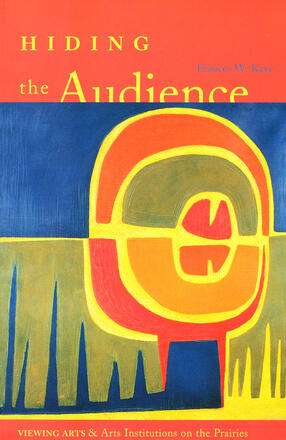
Description
Fran Kaye looks at a variety of public arts institutions, including the Glenbow, Banff Centre, and 25th Street Theatre, to see how each has participated in creating its audiences. She examines prairie literature and visual arts that illustrate the development of a distinctive regional prairie culture.
Reviews
"Hiding the Audience is what the author calls 'an institutional history,' but it goes well beyond the brick-and-mortar concerns so often prevalent in museum studies.... This is an indispensable account for any reader or professional interested in Alberta's museums community." Ken Tingley, Alberta Museums Review
"Hiding the Audience certainly provides a fresh approach to understanding the construction of a regional culture, destabilizing institutional moorings in favour of a broader audience perspective that exposes the politics of art and cultural memory.... Hiding the Audience makes a convincing case that, in defining regional identity and a sense of place, the dialogue between art and audience matters." James Opp, Carleton University
"This book can read like polemic.Nevertheless, this is an essential book for anyone interested in Canadian culture and cultural practices west of Toronto. Frances W. Kaye unravels our cultural foibles, the extent of our blindness and general stumbling around. She also shows that even within institutions changes can be made, stereotypes abandoned, or at least modified, and new ways of looking, and even healing, embraced." University of Toronto Quarterly, Vol. 74, No. 1, Winter 2004/5
"Hiding the Audience provides fascinating and suggestive new lines of thought for students of Canadian cultural history. Its author, Frances W. Kaye, is a literary scholar and professor of Great Plains Studies at the University of Nebraska-Lincoln. In this book, she offers a commentary on the development of regional culture in Canada, a commentary that is informed by theoretical insights from literary and cultural studies as well as by traditional archive research....Anyone who believes in the power of art to transform society will find something of value in this book." Russell Johnston , H-Net Reviews
"[Kaye's] histories of Glenbow, Banff Centre, and the Riel controversies are thorough and detailed. This book shows how these arts institutions, and the Riel figures, fit into thoughts and attitudes of western Canadian society. It is an excellent book." Alberta History
"This major study of cultural production in western Canada by an American scholar is a significant contribution to our understanding of the formation of the western Canadian identity during the second half of the twentieth century..It was a pleasure to read about these episodes of western Canadian cultural history that I have personally lived through and watched with interest. Her case studies are insightfully argued. Together they provide an excellent summation of the current state of debate and dialogue in regional culture." George Melnyk (University of Calgary), The American Review of Canadian Studies, August 2004
"Kaye (Univ. of Nebraska) provides a wealth of information concerning the arts environment and corresponding governmental cultural policies directed toward Native American tribes. The author offers hope from a dark period of subjective oppression for the arts and Native population. The differing audiences explored throughout are a step toward evolution for the arts of Canada. Summing Up: Recommended. General readers; lower-division undergraduates through professionals." M. H. Wounded Head, Mesa State College, CHOICE
"Kaye chooses to focus primarily on a Native Canadian novel (Thomas King's Green Grass, Running Water), the Banff Centre for the Arts, the Glenbow Museum, The Spirit Sings exhibition, the sculptural history of Louis Riel, and the thespian trajectory of Paper Wheat." Mark Harris, Canadian Literature 183, Winter 2004